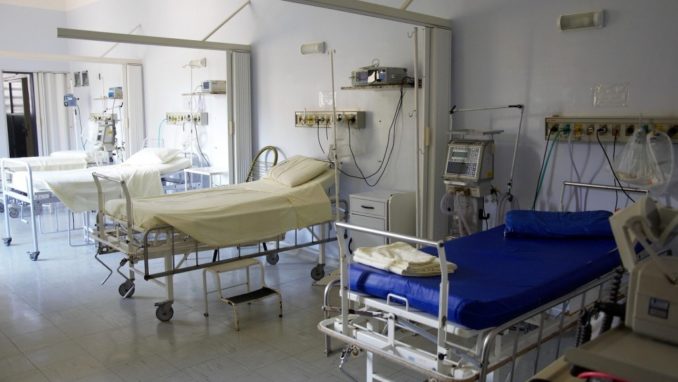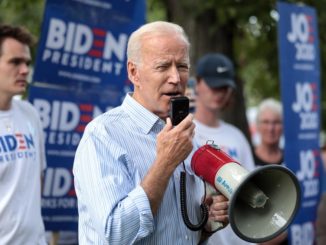
California’s Democrat socialist democracy, thanks to our one-party supermajority, is a sterling example for our country. At least its chief architect, Gavin Newsom, hopes so for his 2028 ambitions. His chief entitlement used to attract legitimate and illegitimate votes is some version of universal health care, at low or minimal apparent cost. The Golden State’s Medi-Cal program is the Democrats’ most shining example.
Given that California is the world’s fifth largest economy, responsible for 15% of all U.S. manufacturing and 11% of all agricultural cash receipts, paying for healthcare for those in need based on funds from those who have might seem reasonable. Our state budget, at $322 billion, is the largest in the country. But the budget for no- or low-cost care via Medi-Cal is $193.4 billion, with $42.8 billion needed from the General Fund. The federal government covers, via “matching” funds, slightly over half that budget. So how do we now experience a $3.4 billion shortfall in Medi-Cal health benefits that require another loan from the General Fund with no clear plan or means for repayment? Especially when the state faces a broader structural deficit of at least $10 Billion yearly.
Sanctuaries cost money and attract deficit spending like honey attracts bears. Over the past several years our California socialist democracy has granted free health care for children regardless of citizenship (or residency), and expanded that coverage through all age groups, in addition to the broad expansion given nationally during the “Covid Pandemic”. California spent approximately $8.4 billion in 2025 alone on Medi-Cal health benefits for individuals without legal immigration status. This figure exceeded initial projections by over $5 billion. The expansion of Medi-Cal to cover all undocumented residents has cost approximately $2.8 billion more than budgeted. California’s Medi-Cal expansion provided healthcare to approximately 1.7 million undocumented residents in 2025. California is home to approximately 2.7 million undocumented immigrants, making it the state with the largest population of undocumented residents in the U.S. Its not just the weather, or the easy availability of jobs “picking cotton” (since Jazzy Crockett says she won’t do that anymore). As a result, California provides free health care to more than a third of its 39 million residents.
What does this mean in real terms, and how is it really paid for? The average yearly payment for healthcare per California resident covered by Medi-Cal is approximately $7,929 as of 2020. Note that was BEFORE the massive expansion of Medi-Cal to the larger population of illegal aliens. Where do they get their care? Approximately 64% of physicians in California reported accepting Medi-Cal patients, according to recent studies. However, this percentage has been declining over the years due to factors like low reimbursement rates and administrative challenges. Specialists are even less likely to accept Medi-Cal, with only about 37% participating. The average cost to a physician for a Medi-Cal office visit can vary widely depending on factors like location, practice size, and the complexity of the visit. However, estimates suggest that the cost typically ranges from $50 to $100 per visit. Actual Medi-Cal payments to the physician are often in this range or slightly above, thus many physicians will not see those with only Medi-Cal since the visit may be a net financial loss to the practice.
That thin reimbursement comes from a combination of state and federal funds. More than half the state’s Medicaid funding comes from the federal government. For the next fiscal year, that’s roughly $112.1 billion. Federal funding doesn’t cover costs related to preventive care for immigrants without legal status. California, like most states, “games” the system with a kickback scheme from healthcare providers. The “normal” system is complex. The federal government reimburses states for Medicaid expenses through the Federal Medical Assistance Percentage (FMAP), which varies by state. The base FMAP for traditional Medicaid services ranges from 50% to 77%, depending on a state’s per capita income relative to the national average. By law, the FMAP cannot fall below 50% or exceed 83%.
Certain Medicaid services and eligibility groups have enhanced FMAP rates. For example, states that expanded Medicaid under the Affordable Care Act (ACA) receive a 90% federal match for newly eligible enrollees. Administrative costs are generally matched at 50%, while technology updates for eligibility and enrollment systems may receive 75% or 90% federal funding. Those technology updates can be gamed to some degree. Despite its best efforts, California’s Federal Medical Assistance Percentage (FMAP) for Medicaid is 50%. This means the federal government covers half of the state’s Medicaid costs. The only way to “increase” those costs and thus increase the actual federal dollar matching is to increase the apparent cost of healthcare provider services while decreasing the realized costs. California does this with a healthcare provider “tax”, as do most states.
California healthcare providers pay the state Managed Care Organization Provider Tax. Since 2023 healthcare providers have paid $19.4 billion to participate in the Medi-Cal system. This was imposed on managed care organizations (MCOs), which include full-service health plans. This tax applies to both their Medicaid (Medi-Cal) and non-Medicaid (commercial) lines of business (and thus indirectly raises the cost of that private care). In 2025, California’s Managed Care Organization (MCO) Tax generated over $12 billion in gross revenue. However, due to the state’s arrangement with health plans, less than $8 billion in net revenue was available for spending. This means that $8 billion was given back to the healthcare providers, resulting in a higher fee structure to report to the federal government. Most of this revenue was used to support Medi-Cal by drawing down additional federal matching funding. California pays more, as reported to the federal government, and then taxes some of the extra payment back. The federal government recognizes the higher initial payment and “matches” it. In 2025, the Managed Care Organization (MCO) Tax in California significantly boosted Medi-Cal reimbursements. It raised provider rates for targeted services, such as primary care, obstetrics, and mental health, to at least 87.5% of Medicare rates (which themselves are barely acceptable). And the federal government raised its “matching” appropriately. The returns of the MCO Tax to the state are conveniently ignored. Some states use excess funds from this kickback scheme for budgetary purposes other than healthcare. I could not find dependable information regarding this for California.
But as noted above, thanks to our generosity, we are falling well short of funding Medi-Cal with private wealth confiscation (taxes). Partly due to that generosity but also due to billions of dollars lost to fraud in the Pandemic, false unemployment claims, and inadequate oversight in homeless spending, etc., as well as our open-door sanctuary policies. Governor Gavin Newsom recently signed legislation to allocate $2.8 billion in state funding to close the gap (the source of this funding is unclear to this researcher). This funding will unlock additional federal matching funds to cover costs through June. Additionally, the state has taken out a $3.44 billion loan from the General Fund, which is the maximum allowed under state law. How is this to be repaid, given that California, unlike the U.S.A., can’t endlessly print more money? The state is exploring cost-cutting measures, such as ending pandemic-era protections that prevented disenrollment from Medi-Cal. Imagine, a socialist democracy that may be forced to place limits on its extravagance! Even so, California doesn’t have the capacity to backfill services funded by the federal government, officials have said. Those officials have also said California plans to address the $3.44 billion loan from the General Fund for Medi-Cal through a combination of strategies. The state is relying on additional federal matching funds unlocked by these recent state funding allocations. Additionally, California is exploring cost-cutting measures, such as ending pandemic-era safeguards that prevented disenrollment from Medi-Cal, to reduce future expenses (even as our illegal alien population increases?). The state is also considering “long-term solutions” to manage Medi-Cal’s financial sustainability, including “potential adjustments to enrollment and benefits” (per AP reports–meaning California has no distinct strategy to repay the loan).
Eventually, perhaps after Gavin Newsom’s second Presidential term has ended, California’s Medi-Cal system must, along with the rest of the state budget, implode. State government can only play the budgetary shell game so long before the suckers (voters) note that there is no pea under any of the shells. All California’s policies that seek to increase revenue through ever metastasizing taxes, bonds, and fees force out those initially able to pay them in favor of those on the social dole. 13% of all California residents receive some type of public assistance, and suggestions from what data are available are that 41% of immigrant households in California receive some form of public assistance. Providers of products or services will only accept price controls (state-controlled insurance or fee rates) and increasing regulations so long before they cease operations, go elsewhere, or are taken over by the state. Medi-Cal is a harbinger of California’s overall future, a socialist democracy racing to the bottom.
(The data above was sourced via an AI engine, and each of its sources was checked by the author for veracity. The original sources included California state agencies, Associated Press, federal agencies, etc.)
© Nik Bednarski, M.D. 2025



